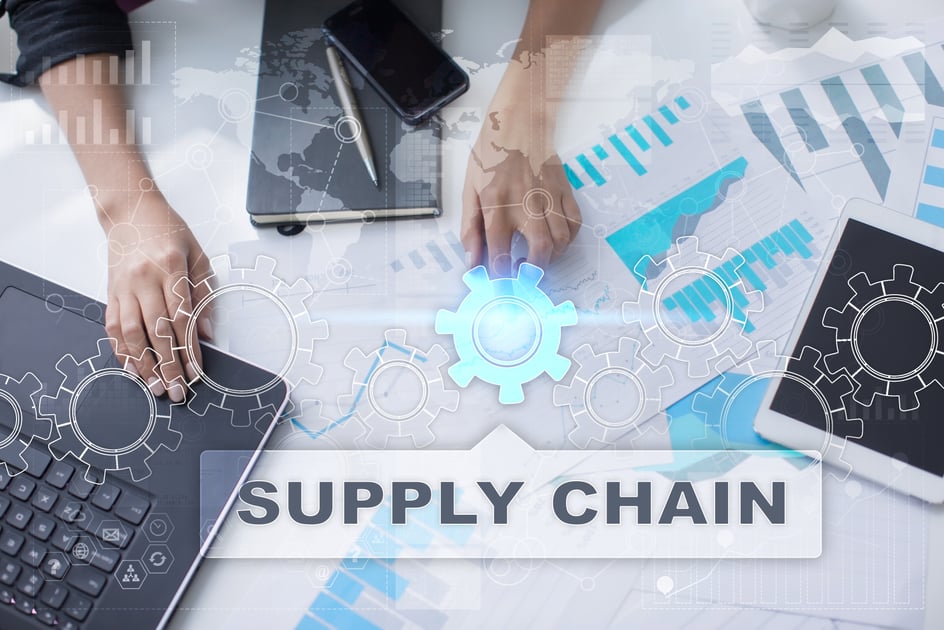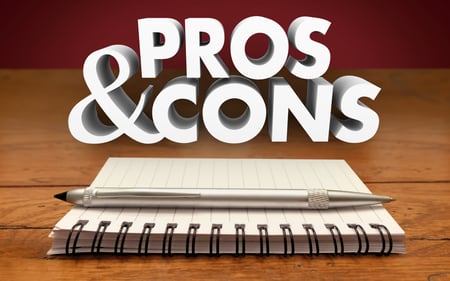
 The decision to outsource your logistics functions is not one to be made lightly, but a choice thousands of other companies have successfully executed.
The decision to outsource your logistics functions is not one to be made lightly, but a choice thousands of other companies have successfully executed.
Essentially, outsourcing logistics services puts the day-to-day execution in the hands of trusted logistics experts that frees up a shipper's resources and capital to focus on their competitive advantage and growth.
According to a recent Armstrong & Associates report, ninety percent of Fortune 500 companies use third-party logistics providers (3PL) for outsourced logistics and supply chain services, which makes for a strong endorsement to the value in outsourcing to a logistics service provider (LSP).
Companies that use a third-party logistics provider (or 3PL) have found outsourcing logistics does not have to be an all encompassing decision, but one that can be ala carte: freight brokerage, transportation management, managed TMS, warehousing, cross-docking, inventory management, packaging and freight forwarding.
Shippers will typically consider outsourcing logistics when there's a change in the company's structure or strategy, or simply when costs are on the rise and service levels are falling.

For the purposes of our discussion, we’ll focus on reviewing the pros and cons of outsourcing logistics and supply chain management with regards to Managed TMS or as others call it Freight Management.
This article is written from the perspective and lessons learned on some of the great and not so great logistics partnerships over the years.
With the baseline established for this article, let’s dig deeper into the topic with an outline of the pros and cons of outsourcing freight and logistics functions that we will peel back in more detail through the next several paragraphs.
Pros & Cons of Outsourcing Freight
- Pros
- Cost Reduction
- Technology
- Industry Knowledge
- Relationships
- Scalability
- Speed to Change
- Focus
- Integration of Key Systems
- Immediate Solution to a Problem
- Risk Management
- Cons
- Core Business
- Loss of Control
- Strategic Misalignment
- Cultural Misalignment
- Integration of Key Systems
- Mismanagement of the Relationship
- 3PL Takes Advantage of Their Position
Cons of Outsourcing Logistics
 So many articles start with all the great things, but we like to be a little different here at InTek, so let’s start off by getting the negatives out of the way.
So many articles start with all the great things, but we like to be a little different here at InTek, so let’s start off by getting the negatives out of the way.
Core Business
This one comes as a surprise to even us and it has to do with a company’s core business model and market proposition.
If your company drives its primary value by being experts in logistics, then you do not want to outsource your logistics functions.
Loss of Control
Logistics service providers typically adopt its client’s branding making their relationship transparent to their customers, but for many there is concern they will lose control of the critical touchpoint of their vendors and customers.
If your company falls into this bucket, the leadership team will have to do some serious soul searching because like companies that see their logistics arm as a key component to their market value, companies that feel like they are losing control will never give the reins to the LSP in a way that the relationship will be successful.
After the soul searching goes well, below is a handful of ways to help put control into an outsourced solution:
- Contract language that includes service level agreements.
- Treat the 3PL relationship as a department within your company, which has a company representative daily direct report assignment.
- Monthly and quarterly service and cost reporting that will include a meeting with the company representative(s).
Strategic Misalignment
It's critical for both parties in a 3PL relationship to share an understanding of the company’s strategic direction. There can be no secrets between the company and the 3PL. Both need to look at the other as long term strategic business partners.
It is critical for the shipper looking for a Managed TMS service solution to ensure they are working with a 3PL that fully understands the service or is looking at more as a way to tie in a shipper for a long term relationship where that allows them to control the narrative.
In other words, the 3PL must be in the mindset to engage the client at the strategic level and not see the relationship as an opportunity to maximize its own asset utilization.
Cultural Misalignment
Another area to be aware of is the fit between the company and 3PL culture.
The misalignment of culture can be disastrous to any ManagedTMS relationship. The consequences can be a lost sense of the overall goals, decreased KPI’s and irreparable damage to the relationship.
The key to getting this area correct is exploring the cultural behaviors of both organizations, both the verbal and no-verbal cues.
Integrating Information Technology
 Integrating information technology can be found on both the pros and cons side of the equation.
Integrating information technology can be found on both the pros and cons side of the equation.
On the cons side, integrating a company’s key systems can be a monumental challenge for some companies because of the number of platforms it operates or the IT team does not have the bandwidth to execute and test the necessary integrations.
To add to the difficulty of integrating a TMS is a logistics and supply chain platform requires every piece of data to be real-time. A few examples of why include: manufacturing needs to know when the components are to arrive, customer service needs to know when stock will be ready for shipping and sales needs to know when a product will hit its customers’ docks.
All said, data must flow between systems and all parties must have full visibility to manage and optimize the supply chain network.
The last point to make is watch for any possible crack in the buy-in from internal IT teams. It will lead to a difficult TMS implementation and failed outsourced logistics relationship.
Mismanagement of the 3PL Relationship
The best 3PL relationships are not out of sight out of mind business partnerships.
The key to a successful logistics and supply chain partnership is one that is managed by a shipper that looks at the 3PL as its own internal logistics department. Yes, the shipper can eliminate the tasks and people that did the tasks, but the manager should stay in place and be the liaison between the company and its logistics service provider.
3PL Takes Advantage of Their Position
 The last possible negative a shipper needs to consider is a situation where the logistics service provider takes advantage of its knowledge and leverage in the market and finds ways to make money through its own assets and does not pass them along to its customer.
The last possible negative a shipper needs to consider is a situation where the logistics service provider takes advantage of its knowledge and leverage in the market and finds ways to make money through its own assets and does not pass them along to its customer.
This situation can happen in the following ways:
- The 3PL is not managed with a company liazon that treats the external work as that done within its four walls.
- The carrier contracts are not set up directly with the shipper.
- Understand the 3PL is performing a service, not in a position to make margins off the freight it moves therefore the service is to execute RFP’s, negotiate the best rate with the motor carriers, based on market data and assist the shipper in signing the individual carrier contracts.
- No clear measurable KPI’s that are benchmarked against the industry or reviewed against internal logistics contract measurables.
- The arms-length relationship between the shipper and the LSP becomes more of a friend than a strategic business partner. Like a boss and employee relationship, there needs to be a line in the sand that keeps the boundaries for both parties to execute to the goals of partnership that was originally established.
Pros of Outsourcing Logistics
With the cons out of the way , let’s jump into the pros of outsourcing logistics and supply chain execution and strategy.
Cost Reduction
 This pro is a benefit on everyone’s list, but still worth going through in some detail. Also, this would be a good time that outsourcing to a logistics service provider brings far more value than just cost savings to the logistics and supply chain functions of a company, so if this strategy is for your company, dig deeper for the full value.
This pro is a benefit on everyone’s list, but still worth going through in some detail. Also, this would be a good time that outsourcing to a logistics service provider brings far more value than just cost savings to the logistics and supply chain functions of a company, so if this strategy is for your company, dig deeper for the full value.
Cost reductions essentially come in two forms when using a 3PL: operational costs and more effective use of capital.
Through a 3PL a shipper can expect to capture savings through the LSP’s technology, industry knowledge and proven process. These three areas will save a shipper in their own technology, FTE’s (full time equivalent), freight cost, safety stock and an overall improved order-to-cash cycle.
With all that said, when evaluating Managed TMS service providers it is important to have the LSP demonstrate their technology and knowledge in the industry, with the latter being of utmost importance and difficult to nail down.
From our experience in onboard Managed TMS clients is that were once one of the largest LSP’s is the larger 3PL’s can demonstrate knowledge at the corporate level, but if your company is not one of the bigger fish in their ocean of clients then that layer will not be involved with the daily execution and strategy of your account.
The end result is whatever the initial benefits coming from the 3PL relationship were identified during the evaluation will start and end on go-live. The opportunity for further growth and improvement in the partnership will be greatly diminished.
As part of the ROI calculation the cost savings associated with a Managed TMS program can be classified into the categories of: people, technology, carrier and knowledge and inventory.
People Costs
A logistics service provider (LSP) leverages its cost structure over hundreds of companies to bring its skilled workforce team down to a variable cost model for immediate and significant cost savings to shippers.
Technology Cost
As with people costs, a 3PL leverages its cost structure over hundreds of clients to bring the best cloud based TMS that contains all the bells-and-whistles for operational excellence, reporting & analysis and market data a shipper would dream to have, but cannot because it the denominator of one makes it cost prohibitive for the vast majority of companies.
While the 3PL’s transportation management software cost will be cheaper to operate it will also enable the shipper to optimize its negotiated freight contracts through rate shopping, modal conversion and freight consolidation.
The TMS will ensure the lowest contractual rates are used, it will help in keeping the shipper out of the freight spot market in those challenging freight markets like those during the 2014 polar vortex, incredible demand of 2018 and the troubled 2020 pandemic market.
Carrier Base and Industry Knowledge
 A freight based 3PL will bring savings because of its already robust carrier base and industry knowledge. While shippers often have a tremendous knowledge base on the freight market, the largest of shippers can’t scratch the surface the motor carrier pool a 3PL has at its fingertips because they do not live the freight and logistics market 24/7 for their survival, just as logistics companies do not live in any of its clients end markets.
A freight based 3PL will bring savings because of its already robust carrier base and industry knowledge. While shippers often have a tremendous knowledge base on the freight market, the largest of shippers can’t scratch the surface the motor carrier pool a 3PL has at its fingertips because they do not live the freight and logistics market 24/7 for their survival, just as logistics companies do not live in any of its clients end markets.
On the flip side, a logistics company does not know all features, functions, alternatives and the global competitive market its clients live everyday.
With those thoughts in mind, the amount of knowledge a 3PL brings to the table is an instant shot of thorough information that drives improvement in cost and service.
The breadth and depth of experience a 3PL has will run through its people, processes and technology at a level beyond what a single company can develop independently.
The 3PL can manage through fluctuations in freight capacity, combined with various disruptions ranging from pandemic, economic growth / slowdown, weather, etc. easier and more efficiently because of its experience and technology that will optimize the logistics solution.
Add in the carrier relationships the 3PL supports and enhances the logistics solutions the technology identifies possible.
Inventory
On the other side of cost savings an LSP improves a shipper’s order-to-cash cycle with the reporting, visibility and analytics to more efficiently move product through a company’s all important supply chain to reduce stock-outs, increase inventory turns and improve POS (point of sale) sell-through.
The reason for this is the logistics system will enable the shipper to react faster to customer demands, especially with a forward-deployed inventory model and a network of couriers and expedited carriers. Additionally, 3PL's can integrate reverse logistics in order to return items to inventory faster, helping reduce carrying costs.
Scalability
 A 3PL can scale up or down quickly to respond to demand without sunk costs for personnel, training, technology, real estate, equipment, etc.
A 3PL can scale up or down quickly to respond to demand without sunk costs for personnel, training, technology, real estate, equipment, etc.
One of the greatest strengths of a logistics provider is to help shippers quickly scale operational requirements on a variable cost basis. This attribute makes a 3PL a perfect fit for small to medium sized companies with high growth potential.
The scalability allows the shipper to focus its internal resources on growing organically and through mergers and acquisitions (M&A), while the logistics provider can add services and capacity as necessary.
Speed to Change
Again, a logistics service provider has a breadth and depth of talent, resources and technology that allows their clients to lean on them not only for the scale, but also in a time period that is unmatched by a company going it alone.
Our company has been in situations where major international companies required an immediate solution to ship to the big box retailers immediately. In the two situations that are front of mind came about because the shippers were having difficulty in getting their new TMS and warehouse management system (WMS) to function appropriately for the success it needed in the holiday season. The call came in on Friday afternoon and we had the solution for our clients up and running over the weekend without a disruption.
Immediate Solution to a Problem
There is more to speed than pure execution.
The 3PL’s depth and breadth of people, knowledge and technology can be leaned on heavily by shippers for other immediate needs a company may have with its logistics and supply chain.
Some examples where logistics service providers bring immediate solutions to a problem include: increasing a company’s supply chain footprint, adding a geographical location and bringing additional freight capacity for surge or special projects.
Focus
 A good 3PL relationship allows companies to focus on building their business, while the logistics and supply chain activities are managed by the 3PL.
A good 3PL relationship allows companies to focus on building their business, while the logistics and supply chain activities are managed by the 3PL.
By letting go of the day-to-day work, the company can redeploy its personnel and capital in the most productive manner to help them build a competitive advantage in their market.
Integration of Key Systems
An LSP brings with them a transportation management software (TMS) system that allows its users to not only tap into a best-in-class TMS but also tap into its ERP in a way to provide real-time information that is invaluable to its success.
In addition to the internal integrations, the TMS can quickly access other top technologies in the logistics and supply chain market that it otherwise would not be able to access on their own because of cost.
And the last point to make with integrations is a 3PL takes lightens the load on the IT resources a company needs to maintain because many of the key integrations that are external to the company is associated with logistics and supply chain connections, which can be laid at the feet of the 3PL to manage and maintain.
Risk Management
 An area that is often overlooked in the pros and cons discussion of a logistics provider is the mitigation of risk, which can include both legal and business.
An area that is often overlooked in the pros and cons discussion of a logistics provider is the mitigation of risk, which can include both legal and business.
On the legal side, a 3PL has legal risk built into its DNA. The top 3PL’s TMS is integrated into key systems that track motor freight safety ratings, insurance active and filed and various other points that give forward guidance the carrier may have impending issues that could impact its ability to operate safely in the future.
While invaluable is often overused, the connections the well positioned logistics providers protect companies against loading their freight on potentially illegal operators which is often an overlooked piece of the freight and logistics equation.
On the business risk side, the 3PL brings contingencies within its operations to keep its clients in the best possible position when changes occur with the market, economy or the company.
Final Thoughts: Outsourcing Logistics Pros & Cons
 So, we’ve just outlined a few of the outsourcing logistics pros and cons.
So, we’ve just outlined a few of the outsourcing logistics pros and cons.
Given the challenging logistics environment, partnering with an experienced 3PL provider may be able to help turn an inefficient and costly supply chain into a competitive advantage.
For the best results, structure your company's relationship with a 3PL around an outcome-based result from the start as opposed to treating it as a pure cost-reduction exercise.
Also, if you do decide to move forward with third-party logistics for your company, seek out a trusted 3PL partner.
As they say, “Rome Was Not Built in a Day”, so take your time in vetting the logistics provider that demonstrates the pros mentioned above and fits well culturally and strategically.
Don’t be hesitant to look into the medium sized 3PL for the ManagedTMS service because the biggest name is not a fit for all companies and being a larger fish in a medium sized pool beats the heck out of being a small fish in a big pool.
Additional Resources on Managed TMS Service Solutions:
- The Comprehensive Guide on Managed Transportation Services
- The Complete Guide to Freight Management Service Solutions
- How Much Does Managed Transportation Cost? A Comprehensive Guide
- 2020 Best Managed Transportation Companies (And How to Choose)
- Freight Costs: An Insider’s Look on Freight Pricing Buyers Should Know
- Best Transportation Management System (TMS) Software Packages
For more on InTek Freight and Logistics, please visit our website and blog.
Get Updates
Featured Articles
Categories
- Freight & Shipping Costs (52)
- Freight Broker (58)
- Freight Forwarder (2)
- Intermodal Transportation (180)
- International & Cross Border Logistics (43)
- Logistics & Supply Chain (413)
- Logistics Service Provider (76)
- LTL (39)
- Managed TMS (49)
- News (38)
- Supply Chain Sustainability (12)
- Transportation Management System (37)
- Truckload (120)
- Warehousing & Distribution (49)




